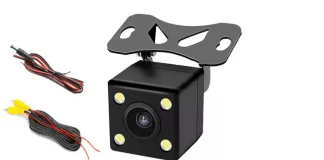When it comes to modernizing your car’s infotainment system, Android Auto stands out as a highly popular choice. It brings the power of your Android device directly to your car’s dashboard, providing seamless access to navigation, music, calls, and more. But do you really need an Android head unit to run Android Auto? Let’s dive into this question and explore the different options available for integrating Android Auto into your vehicle.
What is Android Auto?
Before we tackle the main question, let’s briefly recap what Android Auto is. Android Auto is a mobile app developed by Google to mirror features from an Android device to a car’s dashboard infotainment system. It provides an easy-to-use interface for accessing essential apps like Google Maps, Spotify, and phone functions, all designed to minimize distraction while driving.
Understanding Android Head Units
An Android head unit is an advanced infotainment system that runs the Android operating system natively. These devices can install and run Android apps directly, just like your smartphone or tablet. They come with various features like GPS navigation, Bluetooth connectivity, Wi-Fi, multimedia playback, and more. In essence, an Android head unit can function independently without needing to connect to an external Android device.
What You Actually Need for Android Auto
The good news is that you do not need an Android head unit to run Android Auto. All you need is a display screen in your car that can connect to your Android phone. Here’s how it works:
- Dumb Screens: Many modern vehicles come equipped with “dumb” screens, which are essentially display units without any smart functionalities on their own. These screens can connect to an Android phone via a USB cable or wireless connection to run Android Auto. The intelligence and processing power come from your phone, while the screen serves as an interface to interact with the Android Auto features.
- Aftermarket Dumb Screens: If your car doesn’t have a built-in screen or if the existing one is outdated, you can opt for an aftermarket dumb screen. These units are designed specifically to provide a display for Android Auto and are generally more affordable than fully integrated Android head units. They come with the necessary electronics to connect to your Android device and display the Android Auto interface.
Advantages of Using Dumb Screens
Opting for a dumb screen to run Android Auto has several advantages:
- Cost-Effective: Dumb screens are generally cheaper than full-fledged Android head units. They provide a budget-friendly way to upgrade your car’s infotainment system.
- Ease of Use: Since the primary intelligence comes from your phone, setup and updates are straightforward. Your phone handles all the processing, so there’s no need to manage another operating system in your car.
- Flexibility: You can easily replace or upgrade your phone without affecting your car’s infotainment system. As long as your phone supports Android Auto, it will work with your dumb screen.
Why Consider an Android Head Unit?
While dumb screens offer a practical solution for running Android Auto, there are still reasons to consider an Android head unit:
- Standalone Functionality: An Android head unit can run apps independently, without needing to connect to a phone. This can be useful for features like GPS navigation, media playback, and internet browsing.
- Enhanced Features: Android head units often come with additional features like built-in GPS, higher-quality audio outputs, more extensive connectivity options (Bluetooth, Wi-Fi, etc.), and larger, higher-resolution screens.
- Customization: With an Android head unit, you have more control over the interface and can customize it with various apps and settings to better suit your preferences.
Conclusion
In conclusion, you do not need an Android head unit to run Android Auto. A simple dumb screen, either built-in or aftermarket, is sufficient to display Android Auto’s interface and provide its full range of functionalities. This makes it a flexible and cost-effective solution for many drivers looking to enhance their in-car experience. However, if you seek more advanced features and standalone capabilities, an Android head unit might be worth considering. Ultimately, the choice depends on your needs, preferences, and budget.
By understanding the difference between these options, you can make an informed decision that best suits your driving needs and enhances your overall in-car experience. Whether you opt for a dumb screen or a full-fledged Android head unit, Android Auto is sure to bring a modern, connected feel to your vehicle.








